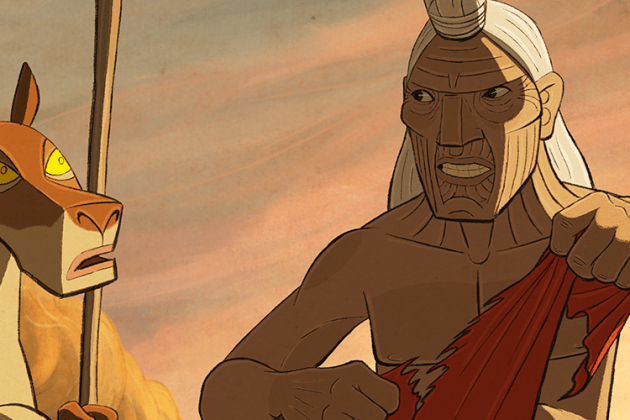Hungarian Oscar Entry ‘Four Souls of Coyote’ Animates Native American Creation Myth to Reframe Story of Climate Crisis

Annecy Cristal Prize winner Áron Gauder, who won the festival’s top prize in 2005 for his time-traveling love story “The District!”, returned to the prestigious French animation event this year with “Four Souls of Coyote,” an epic adventure inspired by a Native American myth about the creation of the universe that scooped the festival’s Jury Award.
Produced by Budapest-based animation studio Cinemon Entertainment and written and created by Gauder, the 2D-animated project is Hungary’s selection for the best international feature film race at the 96th Academy Awards and plays next at the Hungarian Film Festival of Los Angeles, which runs Oct. 27 – Nov. 2. World sales are being handled by Gebeka International.
More from Variety
Ava DuVernay's 'Origin' to Submit Stan Walker's Original Song 'I Am' for Oscars
How Zac Efron, Greta Lee and More Actors With SAG-AFTRA Interim Agreements Have Oscars Advantage
Speaking to Variety recently from Budapest, Gauder describes “Four Souls of Coyote” as a long-gestating labor of love that highlights the increasingly dire stakes for mankind to live in harmony with the natural world before it’s too late.
“What we have in this story is more universal than just Native American folklore creation myth,” he says. “There’s still time for us to wake up and realize that we’re just one of the creatures on the Earth. It’s not just a story that finished in old times; the creation is still happening and it’s in danger. It’s not something that doesn’t affect us. We can ruin what was created if we don’t act.”
Gauder says his fascination with Native American culture and mythology began during his childhood in Communist Hungary. It deepened with his introduction to the legendary Hungarian songwriter Tamás Cseh, who was the founder of the Hungarian American Indian cultural circle. “He made a camp in the forest where he wanted to rebel against the system, behind the Iron Curtain,” says the director. “It was a hippie camp. People went there and lived in tents. They wanted to live this [way of] being free in nature and making your own society.”
Before his death in 2009, Cseh had recorded translations of a number of Native American folktales that were turned into a children’s book, and Gauder received permission from the singer’s widow to make them into an animation. He pitched the project to Cinemon producer Réka Temple, and the duo conceived an animated series called “Coyote Tales.” After producing two short films, however, they recognized that “the creation myth was much larger and more important than just one episode,” says Temple. The idea for a feature film took root.
By 2016, “Four Souls” started to take shape. Financing, however, was a challenge. “It took a long time to find money. There was a point I almost gave up,” says Gauder. The producers finally got the greenlight at the end of January 2020, just as the coronavirus pandemic was about to sweep across Europe. “All of us were locked down in our houses or in our flats, and then this beautiful film with beautiful, graphic visuals came along,” Temple says. “It was very inspiring. Through our creativity, we could escape what was happening.”
“Four Souls of Coyote” begins in the present day, as a group of Native American teenagers confronts the crew of an oil pipeline project threatening the land of their ancestors — a storyline inspired in part by the 2016 protests against the Dakota Access Pieline in North Dakota, in which members of the Standing Rock Sioux Tribe and other activists rallied against a pipeline that posed a threat to the region’s water supply. The movie’s protest scenes bookend a retelling of the creation myth that serves as a reminder, says Gauder, that humans and animals are meant to coexist.
Throughout production, the filmmakers consulted with members of the Cheyenne and Arapaho tribes, while the soundtrack features music from Native American recording artists including Ulali, Mariee Siou, Joanne Shenandoah and The Sessions Voices.
“Four Souls of Coyote,” which won the best picture award at the Shanghai International Film Festival, will open next month’s Red Nation Film Festival — the only feature film from Europe to play at the indigenous fest this year. The filmmakers have also received requests from Native American leaders to screen the film for their communities, something that Temple describes as “the best recognition for this film.”
“There was a very clear and respectful intention [behind the movie], and I think this intention is reflected on the screen,” she says. “And that’s what the audience feels as well.”
Best of Variety
Sign up for Variety’s Newsletter. For the latest news, follow us on Facebook, Twitter, and Instagram.
